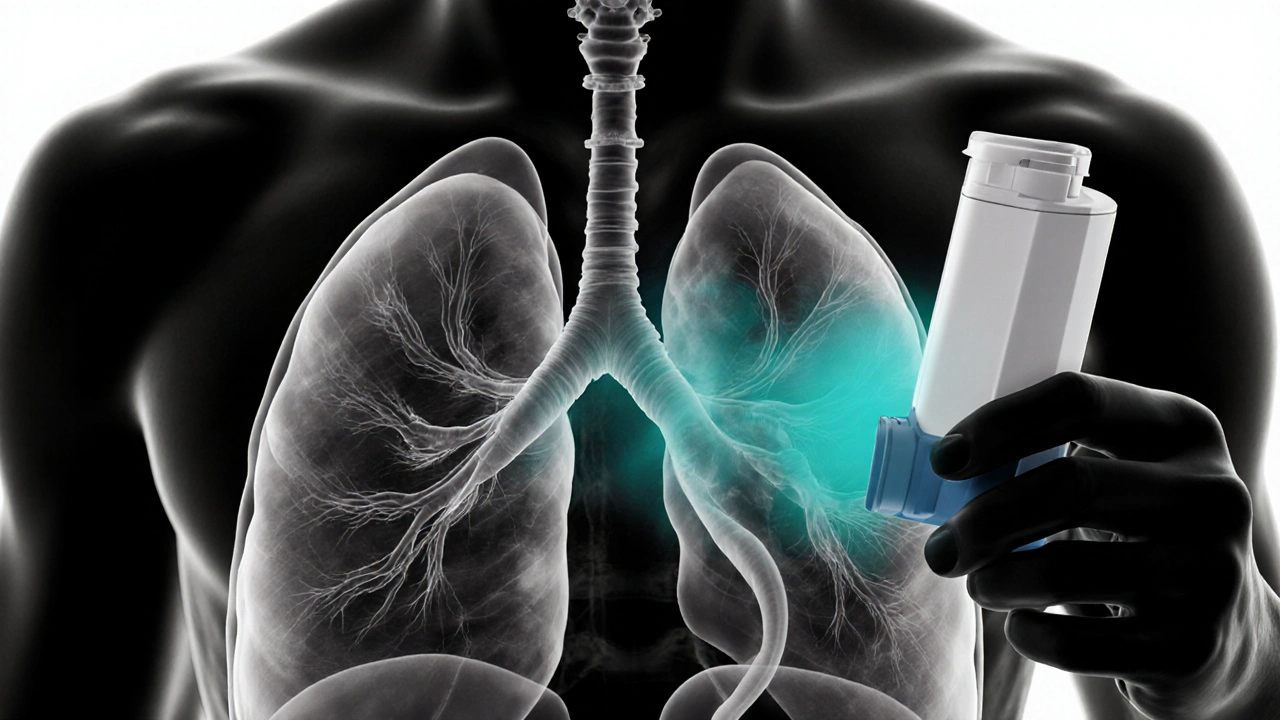Chronic Obstructive Pulmonary Disease (COPD): What You Need to Know
When talking about chronic obstructive pulmonary disease, a progressive lung condition that makes breathing hard and is marked by persistent airway obstruction. Also known as COPD, it usually stems from long‑term exposure to irritants like tobacco smoke.
Core Concepts and How They Fit Together
Understanding chronic obstructive pulmonary disease starts with three facts: it includes chronic bronchitis or emphysema, it causes irreversible airflow limitation, and it worsens over time. The disease requires bronchodilators to open the airways, relies on inhaled corticosteroids to calm inflammation, and benefits from smoking cessation to slow damage. These pieces form a clear treatment puzzle that we’ll break down below.
One of the main drug families are bronchodilators, medications that relax the smooth muscles around the airways, letting more air flow in and out. They come as short‑acting rescue inhalers for sudden shortness of breath and long‑acting formulas for daily control. When paired with other therapies, bronchodilators are the first line that keeps breathing easier.
Another cornerstone is inhaled corticosteroids, anti‑inflammatory sprays that reduce swelling in the airways and lower the risk of flare‑ups. They work best for patients who have frequent exacerbations, and they can be combined with long‑acting bronchodilators in a single inhaler. Using them correctly—proper technique and timing—makes a big difference in symptom control.
Even the best drugs can’t reverse damage caused by smoking, so smoking cessation, the process of quitting tobacco use through counseling, medication, or nicotine‑replacement therapy is a non‑negotiable part of COPD care. Evidence shows that quitting can improve lung function, reduce hospital visits, and extend life expectancy. The sooner a person stops, the slower the disease progresses.
Beyond meds, pulmonary rehabilitation, a structured program of exercise, education, and breathing techniques designed for people with chronic lung disease helps rebuild stamina and confidence. Patients often report less breathlessness during daily chores and a better mood after completing a few weeks. Rehab ties together the physical and emotional sides of living with COPD.
Putting these pieces together creates a manageable plan. Doctors assess severity with spirometry, then match bronchodilators, inhaled steroids, and lifestyle steps to the individual’s needs. Regular check‑ups let the team fine‑tune doses, catch infections early, and adjust rehab intensity. It’s a dynamic process, not a one‑size‑fits‑all recipe.
Many people wonder whether diet matters. While no specific food cures COPD, a balanced diet with plenty of antioxidants supports overall lung health. Staying hydrated keeps mucus thin, making it easier to clear. Simple habits—like avoiding strong fumes, staying active, and keeping vaccinations up to date—also trim the risk of flare‑ups.
Technology has added tools, too. Smart inhalers track usage, reminding patients when a dose is missed. Apps can log symptoms, oxygen levels, and activity, giving doctors a clearer picture during visits. These digital aids fit neatly into the broader treatment network.
Our collection below covers each of these topics in depth: from the science behind bronchodilators to practical tips for successful smoking cessation, from step‑by‑step inhaler techniques to real‑world stories about pulmonary rehab. Dive in to find actionable advice that matches where you are on your COPD journey.
Beclomethasone for COPD: Managing Chronic Obstructive Pulmonary Disease
- Laura Ledas
- Sep, 30 2025
Explore how beclomethasone works for COPD, its clinical evidence, dosing tips, benefits, risks, and practical advice for patients and clinicians.
Learn More